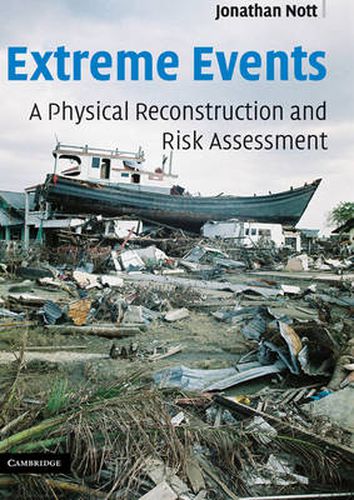Readings Newsletter
Become a Readings Member to make your shopping experience even easier.
Sign in or sign up for free!
You’re not far away from qualifying for FREE standard shipping within Australia
You’ve qualified for FREE standard shipping within Australia
The cart is loading…






The assessment of risks posed by natural hazards such as floods, droughts, earthquakes, tsunamis or cyclones, is often based on short-term historical records that may not reflect the full range or magnitude of events possible. As human populations grow, especially in hazard-prone areas, methods for accurately assessing natural hazard risks are becoming increasingly important. In Extreme Events Jonathan Nott describes the many methods used to reconstruct such hazards from natural long-term records. He demonstrates how long-term (multi-century to millennial) records are essential in gaining a realistic understanding of the variability of natural hazards, and how short-term historical records can often misrepresent the likely risks associated with natural hazards. This book will form a useful resource for students taking courses covering natural hazards and risk assessment. It will also be valuable for urban planners, policy makers and non-specialists as a guide to understanding and reconstructing long-term records of natural hazards.
$9.00 standard shipping within Australia
FREE standard shipping within Australia for orders over $100.00
Express & International shipping calculated at checkout
The assessment of risks posed by natural hazards such as floods, droughts, earthquakes, tsunamis or cyclones, is often based on short-term historical records that may not reflect the full range or magnitude of events possible. As human populations grow, especially in hazard-prone areas, methods for accurately assessing natural hazard risks are becoming increasingly important. In Extreme Events Jonathan Nott describes the many methods used to reconstruct such hazards from natural long-term records. He demonstrates how long-term (multi-century to millennial) records are essential in gaining a realistic understanding of the variability of natural hazards, and how short-term historical records can often misrepresent the likely risks associated with natural hazards. This book will form a useful resource for students taking courses covering natural hazards and risk assessment. It will also be valuable for urban planners, policy makers and non-specialists as a guide to understanding and reconstructing long-term records of natural hazards.